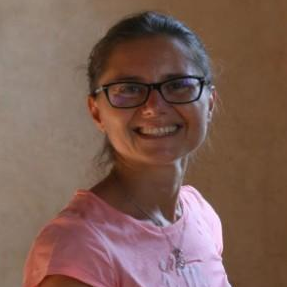Chemical-Physical and Optical Properties of the Aerosol in Europe and the Arctic
A special issue of Atmosphere (ISSN 2073-4433). This special issue belongs to the section "Aerosols".
Deadline for manuscript submissions: closed (9 October 2020) | Viewed by 16183
Special Issue Editors
Interests: aerosol chemistry; arctic aerosols; aerosol measurements; aerosol–climate relations
Special Issues, Collections and Topics in MDPI journals
Interests: climate change; environment; chromatography environmental analysis; geochemistry; ice cores
Interests: development of analytical methods for analysis of inorganic components in environmental, biological, industrial and food matrices; ion chromatography; spectrophotometry and spectrofluorimetry; flow injection and continuous flow analysis; atmospheric aerosol; snow and ice; surface waters; air quality; pollution sources; climate change; paleoclimate
Special Issues, Collections and Topics in MDPI journals
Special Issue Information
Dear Colleagues,
The chemical–physical and optical properties of the aerosol drive its direct and indirect climatic effects. As the aerosol may be long-range transported and the aerosol properties at any latitude may influence the planetary energy budget, both local and regional studies are welcome. As a matter of fact, the final radiative impact on a warming Artic is an actual and important issue on a global scale.
Thus, the present issue is dedicated to any study, either from experimental or modeling activities, in which aerosol properties (even in function of different sources/origins) and their optical/climatic impact are investigated from Southern Europe to the northernmost Arctic.
As most of the aerosol properties are often reported at ground level, vertical profiles measurements/simulations and cruise-based data are welcome.
Finally, aerosol chemical–physical properties should be investigated both by bulk and single particle approaches. Multidisciplinary studies which link size segregated aerosol properties (chemical–physical), fluxes, and hygroscopicity with their optical–climatic properties are encouraged.
Dr. Luca Ferrero
Dr. Mirko Severi
Dr. Rita Traversi
Guest Editors
Manuscript Submission Information
Manuscripts should be submitted online at www.mdpi.com by registering and logging in to this website. Once you are registered, click here to go to the submission form. Manuscripts can be submitted until the deadline. All submissions that pass pre-check are peer-reviewed. Accepted papers will be published continuously in the journal (as soon as accepted) and will be listed together on the special issue website. Research articles, review articles as well as short communications are invited. For planned papers, a title and short abstract (about 100 words) can be sent to the Editorial Office for announcement on this website.
Submitted manuscripts should not have been published previously, nor be under consideration for publication elsewhere (except conference proceedings papers). All manuscripts are thoroughly refereed through a single-blind peer-review process. A guide for authors and other relevant information for submission of manuscripts is available on the Instructions for Authors page. Atmosphere is an international peer-reviewed open access monthly journal published by MDPI.
Please visit the Instructions for Authors page before submitting a manuscript. The Article Processing Charge (APC) for publication in this open access journal is 2400 CHF (Swiss Francs). Submitted papers should be well formatted and use good English. Authors may use MDPI's English editing service prior to publication or during author revisions.
Keywords
- Aerosol
- Chemical composition
- Size distribution
- Optical properties
- Radiative forcing
- Measurements
- Modeling
- Europe
- Arctic
- Transport







